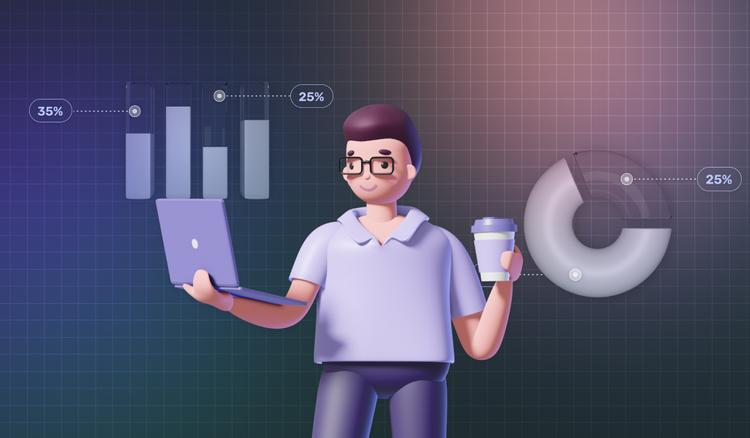If you are planning to expand your business internationally, you are already aware of the importance to ensure your services or products target the local market. It is especially important if you are entering a radically new market. Say, your current market is Germany. So, the answer to the question “How do I launch an app in the USA?” will differ dramatically compared to the steps of launching an app in the Netherlands. In this case, simply adding a translation to a new language won't be enough.
According to CSA research", 75% of users want to buy products in an application using their native language and 92.2% of them want to make purchases seeing the cost in their local currency. That is why, in order to successfully enter a new market, you should make sure your application supports the local language, is integrated with the relevant 3rd party services, and, of course, complies with the laws of the country. In short, you need software localization.
Localization VS Translation
Speaking about websites and mobile apps, localization is often confused with a simple translation. There are even so-called localization tools that basically provide translation and UI adaptation services such as TMS (translation Management System). Let’s reveal the difference so that you can decide what is your option.
App translation
Real-time language translation related to mobile apps means adding a new language. As a result, all application functionality and flows remain unchanged, just the content is shown in another language.
In reality not only do we communicate in different languages, but also use different measurement units and date formats. For instance, in the EU we say "the 24th of May, 2012", as compared to the USA’s "May 24th, 2012". Price formats are also different. In Europe, we use numbers with a comma as a decimal marker, while in the USA there is a decimal point. Not even mentioning, different payment systems and laws. That is the case when we use a more complex approach — localization.
App localization
Software localization is a more comprehensive approach for entering a new market. Game localization follows a similar approach, requiring cultural adaptation and technical adjustments to resonate with players worldwide. Habits of the locals, their social rules, and their culture have a huge impact on user journeys and application flows, as a result, on the changes that need to be made. Moreover, the app localization services include a phase of digging into the data protection and other laws of a new region.
Software localization best practices often include changing some parts of the system under the hood. For example, integration with the relevant payment system that's popular in the new market is necessary because it will increase the conversion. Another important component that shouldn't be ignored is updating the pages of the application in AppStore and GooglePlay specifically for each region.
Step by step plan to launch an app internationally
When you have chosen the new desired region and are ready (financially and emotionally 🤪) to move forward, follow these steps of the software localization process.
1. Market analysis
✔️ User research First of all, an analyst should study market data and if applicable perform user interviews to identify target-audience preferences, habits, and pain points. It is an important primary step because you will also get an estimation of the demand for your services or products. Check if your potential customers need home delivery, the commonly used payment method, and how they manage their problems without your offering.
Culture and traditions also play an important role here. The same color can be perceived differently by people from various cultures. As an example, in Western countries red color is associated with danger, while in India it is a symbol of purity. These peculiarities are important to ensure that the app feels natural to your target audience and not to get abandoned.
✔️ Competitive analysis Knowing your competitors, their strengths and weaknesses give you an understanding of how to win this market and if it is possible. As well, it will give you even more insights into the market and users’ preferences. Find out your future competitors’ product range, design aspects, USPs, marketing strategy and tools they use, etc.
✔️ Dig into the local laws and regulations When localizing your website or mobile app for a new market, you should make sure it complies with region-specific laws. For example, personal data protection in Europe is strongly regulated by GDRP. If you are launching a medical app in the USA, it must be developed in accordance with HIPAA.
✔️ Logistics Explore the logistics specifics, refund and return policies and the possibility of integration with existing delivery services. As a result, you should prepare your refund rules, and delivery options and get the list of logistics services that should be integrated with your application.
✔️ Payment systems Investigate how users prefer to pay in the target location: by cash, by card, with digital currency, or BNPL services. Based on the research, determine payment services that will work for you in this region.
For example, in Nordic countries Klarna, a BNPL service allowing customers to pay with installments is gaining unprecedented popularity. Unlike in the USA where people prefer to make payments with credit cards, in Africa cash remains the leading payment method.
✔️ Customer support Customer support involves various channels which clients use to get sufficient help from the brand. F.A.Q is the primary support channel and it is important to make sure it targets the chosen region. The second channel you should pay attention to is your phone – get a local virtual business phone number to make it convenient for customers to contact you.
Then, you should investigate how to adapt the processing of incoming support requests, as well as work on support managers’ scripts. Interestingly, the rules for addressing a person vary in different regions: in the US, you can greet a user by name, but in Japan, it will be treated as a disrespectful action.
2. Set analytic metrics
Properly chosen metrics allow you to understand what needs to be improved after the app is released in a new market. Such metrics as acquisition, engagement, drop offs, reachability, and some others give you the essential user data: what users like about your application, what are the bottlenecks in user journeys, the most frequently used features, and so on.
3. Development
Now, let’s get down to work. Speaking about mobile application localization, we mean these three main steps.
- Develop a mechanism for formatting dates, prices, and units according to region rules. Developers should use such classes as Measurement and DateFormatter with the appropriate locale to format the data correctly for the selected region.
- Prepare an application for new languages by using the platform instruments. Namely, Localizable.strings for iOS and strings.xml for Android.
- Update application architecture in a way that will allow changing payment gateways/delivery modules to use one that fits in your region.
4. Marketing campaign
When you are planning an app market expansion, your budget must include a marketing budget that even might be higher than the cost of mobile app localization services. So, keep this in mind prior to going to a new market as it ensures your success.
Regarding marketing tactics, you should always rely on your target audience description to understand where people prefer to get information: Google, Facebook, TikTok, newspapers, car radio, or something else. If you're focusing on TikTok, consider strategies to increase TikTok engagement to maximize your reach and effectiveness. The channels vary drastically nowadays. The channels vary drastically nowadays.
Conclusion
Wrapping up, don’t get fooled by mobile app translation when you may need localization of software for entering a new region. It may work for testing a new region, but if you are serious and prepared about your decision, get it done right and by an expert team.


![How to create a fitness app: complete development guide [steps, features, costs]](/_next/image?url=https%3A%2F%2Fsolveit.dev%2Frails%2Factive_storage%2Fblobs%2FeyJfcmFpbHMiOnsibWVzc2FnZSI6IkJBaHBBaVlDIiwiZXhwIjpudWxsLCJwdXIiOiJibG9iX2lkIn19--f4f49625f7b386f020ef279402f1313a6711742a%2FHow%2520to%2520build%2520a%2520fitness%2520app1-min.jpg&w=750&q=75)
